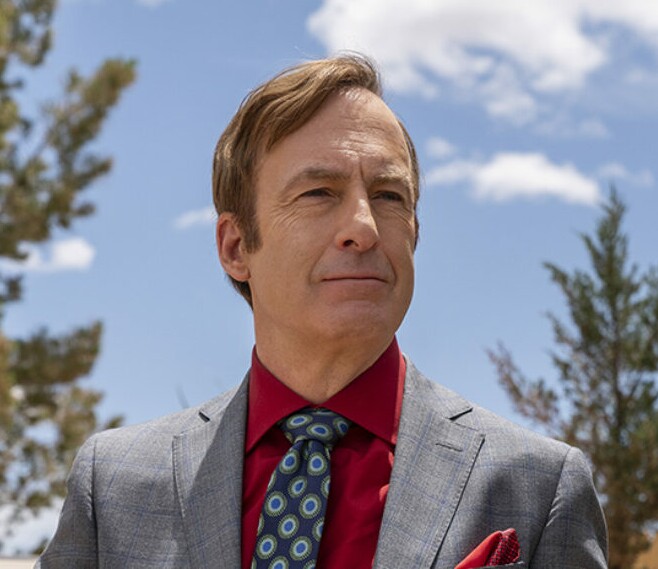"Better Call Saul": A Masterclass in Embracing Excellence

We all have limited time, and we can spend it engaging with people and things that we admire, or we can spend it looking down on people and discussing what angers, disappoints and troubles us. There will always be things that enrage us and get us upset … and these are readily served up by today's algorithmic mediascape. Focusing our attention this way may leave us empty, spent and not any better off than we were before. But, if we focus on excellence and learning from people or things we admire, we are more likely to come away fulfilled and inspired, wanting to reach higher and strive for growth.
Every few weeks this thought letter will focus on something or somebody that the author believes is "the absolute best in the world bar none" and that is available to everybody for little to no cost that bears listening to, watching, or engaging one's attention with. Today it is a television series that will make you feel, see and think differently about yourself, other people, how to look and listen and much more. It is not just a great body of work but a work of art that will reverberate for years.
A case can be made that we are living in the greatest time for television. There are nearly 500 scripted shows in the United States alone. Modern digital tools and competition for content among a plethora of streaming services are enabling more voices and more shows to be more available to more people than ever before.
At the same time our televisions are getting larger with better pictures and sound. (Listen with wireless headphones for a theater experience.) Streaming gives us the opportunity to eliminate commercials and to consume the storytelling on our own schedules.
The pantheon of great shows spans the world and include shows likeBorgen, The Bridge, Fauda, The Bureau and many more from outside the U.S. and The Sopranos, The Wire,Mad Men and Breaking Bad from the U.S.
And then there is one that matches the quality of these legends but could be the best television series made to date. A series that ended last week after six seasons spread over seven years and 63 episodes and is now available worldwide on Netflix and other platforms. Better Call Saul ... the prequel to Breaking Bad, which itself is usually on the list of the best two or three television shows ever.
Saul tells the story of how one of the main characters of Breaking Bad -- a lawyer called Saul Goodman (played by Bob Odenkirk) -- came to be. Over the years the prequel went from being very good to being equal to and then maybe better than the original.
How does one reach for excellence? By focusing on five things that this television series personifies: Emphasis on talent. Culture of excellence and teamwork. Attention to and sweating of details. Aligning with and leveraging technology. Respecting and trusting viewers.
1) It all begins with talent. The show runners and much of the crew of Breaking Bad worked on Saul and many of the stars of the first show play roles on the new show joined by many new actors. You begin with world class talent and stir in years of experience, and you have magic!
2) Culture of excellence and teamwork.Because of the quality of Breaking Bad talent of every sort wanted to work on Saul. But it was not just the quality of Breaking Bad that attracted talent but also the atmosphere and culture of diversity, fairness, empowerment and teamwork that made for an amazing working atmosphere, which made everyone jump at the opportunity to work on the new show. There was an emotional buzz to every day of production that ran across everyone from the main stars to the carpenters working in the prop department. This showed in the work. You can feel it here in the outtakes on the last day of the set.
3) State of the art craft and attention to detail. The late Roger Ebert quoted director Howard Hawks, who said a good movie has "Three great scenes. No bad scenes." As we get into the later seasons of Better Call Saul we have three or four or five great scenes in an hour and there is no single episode among the 63 episodes that will not make you stop and say, "I have never seen anything like that before!" or "How did they do that?" From scripts that are written by wordsmiths who do think visually to casting that is perfect to editing and lighting that moves you this show has it all. The attention to detail includes the need for space and silence.
Here is an article in the Wall Street Journal titled ... How "Better Call Saul" Redefined the Art of Television. It contains this quote: "The visual language of Saul begins with its writers. Their breakdowns of how scenes should look are more extensive than those in typical TV scripts. 'A lot of people think writing is about dialogue, but for us it's the spaces in between the dialogue that are the most important,'[series creator Vince Gilligan says]."
4) Leveraging technology. This show looks different because of its Breaking Bad history and its focus on movie theater screens versus television screens. "In its final episodes, the prequel has caught up to the timeline of Breaking Bad. 'When that show first hit cable in 2008, more and more viewers had flat, wide-screen TV sets in their homes, but many TV directors had not yet abandoned techniques used for old-fashioned squarish screens,' says Mr. Gilligan.
"'Everyone was still framing claustrophobically tight,' Mr. Gilligan recalls. 'For today's TV screens with similar proportions to cinema screens, I wanted to frame in the way John Ford and Akira Kurosawa did, to crib from two of the greats. We tried to make Breaking Bad look as much as we could like a western.'
"Saul, also set in Albuquerque, N.M., premiered in 2015. Before production started, Messrs. Gilligan and Gould presented a slideshow for their crew with images from films they wanted to use for inspiration. They included 1970's The Conformist, known for director Bernardo Bertolucci's unique angles and framing."
Because the later seasons of Better Call Saul were produced a decade after Breaking Bad ended the better technology truly enhances the visual aspects of the storytelling. Here is just one scene less than two minutes long that took days of filming
5) Respecting / trusting viewers. Some of the best art and storytelling in the world is effective for what it leaves out or does not depict as much as what it leaves in or depicts. Many of the most powerful scenes and storytelling in Better Call Saul trusts the audience to connect the dots and fill in the blanks. More is less when you respect the audience.
Not only is Better Call Saul among the best if not the best television show but it's companion podcast is possibly the best free master class one can get on every aspect of how excellence is sculpted. Unlike other podcasts about television shows this one is unique in what it covers and who appears in it. First, it is not about what happened in each episode but on how the episode was crafted. Not the entire episode but maybe two or three key scenes. Second, the creators of the show -- Vince Gilligan and Peter Gould -- participate in each podcast and the guests are not just the actors/actresses but make-up artists, sound engineers, editors, directors of photography, script writers, location scouts, prop creators, music choreographers and the entire spectrum of talent that goes into the making of the show.
It is a master class that will blow your mind on not just how this show is made but how stories are told and the details that go into each minute. You will never ever see, feel or listen to anything you watch in the same way. A master class on how a masterpiece is created minute by minute, block by block by the people who crafted the masterpiece speaking in English for non-experts. Here are links to the podcast on Spotify and Apple but it is available free of cost and free of advertising and promotional interruptions on every major podcast platform. Watch an episode of TV and then listen to an episode of the podcast.
In the end what made Better Call Saul was its delicate and nuanced understanding of humanity. It combined the quest and search of Homer's Odyssey with the comedy of The Simpsons' Homer Simpson. It mixed tragic elements of Shakespeare with the uplifting elements of the redemptive power of love. The complexity of individuals and the forever journey of becoming. It was a series that was constrained in one way that it needed be true to its sequel but as the best creative people have always stated there is nothing as powerful as a tightly constrained brief to unleash the powers of imagination and storytelling.
In one way this is much ado about a fictional story and a television show. But in the end that is all we are. We are stories and one person is many stories.
Joan Didion wrote, "We tell ourselves stories in order to live." Like most great art, Better Call Saul makes you feel more alive when interacting with it and transforms your perspectives long after the experience.
Click the social buttons to share this content with your friends and colleagues.
The opinions and points of view expressed in this content are exclusively the views of the author and/or subject(s) and do not necessarily represent the views of MediaVillage.com/MyersBizNet, Inc. management or associated writers.


